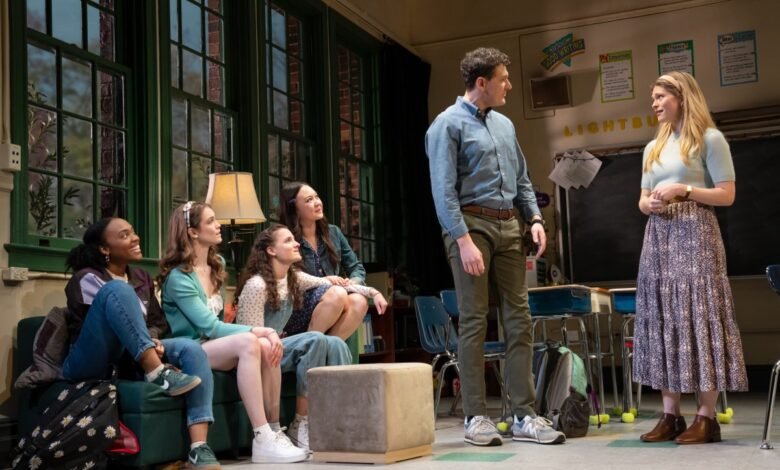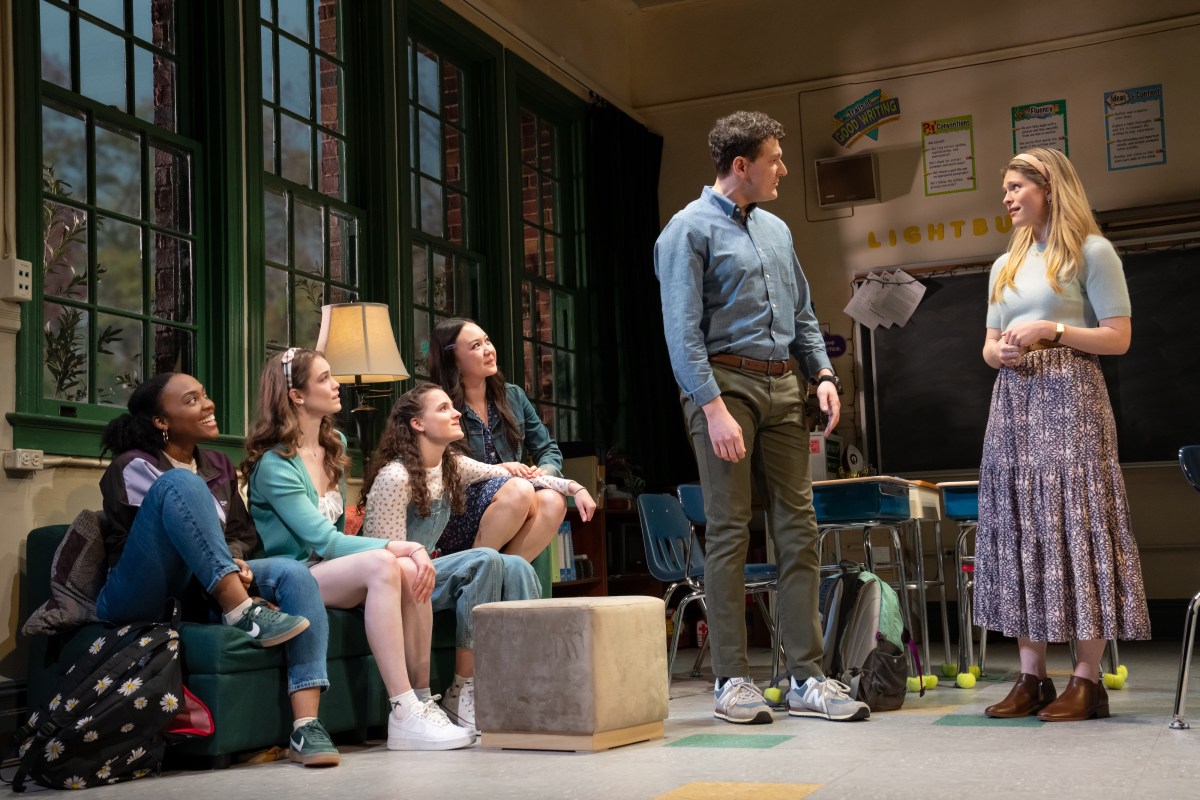

The cast of “John Proctor is the Villain”
Photo by Julieta Cervantes
What if what you were taught about Arthur Miller’s 1953 witch hunt tragedy “The Crucible” wasn’t exactly wrong but was incomplete, or at the very least, overdue for reexamination?
That’s the provocative question at the heart of “John Proctor is the Villain,” an emotionally charged, youth-driven, and unapologetically female-centered dark comedy by Kimberly Belflower. First developed and produced regionally, the play has now arrived on Broadway in a sharp production elevated by the presence of “Stranger Things” actress Sadie Sink, who leads a strong ensemble primarily of young performers.
Set in a rural Georgia high school classroom in 2018, during the height of the #MeToo era, the play transforms “The Crucible” from a revered classic into a catalyst for cultural critique. Under Danya Taymor’s clear-eyed direction, Belflower’s script explores how young women confront power, gender roles, and the narratives they’ve inherited through both literature and lived experience.
The classroom where the action unfolds feels both ordinary and electric. Mr. Smith (Gabriel Ebert), the students’ charismatic English teacher, guides them through Miller’s play with energy and apparent open-mindedness—until the discussion becomes personal.
Sink plays Shelby, a whip-smart student working through trauma while refusing to stay silent. She’s observant, unpredictable, and unwilling to accept easy answers—a human spark to the play’s powder keg. The rest of the ensemble shines as well.
The dialogue captures the rhythms of real adolescence—fragmented, searching, and often cuttingly perceptive—as the students casually drop references to “Glee,” “Twilight,” “American Horror Story,” and Lorde alongside their critiques of Miller and each other. These characters aren’t stereotypes; they’re complex, confused, and curious, trying to make sense of themselves, their community, and the world they’re inheriting.
While the play emphasizes the questioning and awakening of female and underrepresented voices, it also acknowledges the emotional fallout that can come with that clarity. The girls are not immune to confusion, pain, or loyalty. They feel conflicted when someone they care about is accused of misconduct, and the play takes care to show how accusations—however emotionally charged—still exist within a framework of evidentiary standards.
A climactic interpretive dance sequence reframes the Salem girls’ infamous “dancing in the woods” as defiance rather than deviance—a collective release of rage, grief, and joy. It’s not just cathartic; it’s a protest. The movement becomes an act of resistance, reclaiming space, voice, and agency in a world that has long punished girls for being seen and heard. As other students, including a male classmate, join in the dance, the scene evokes the iconic “O Captain! My Captain!” moment from “Dead Poets Society.”
The play doesn’t discard “The Crucible.” It wrestles with it—closely, critically, personally. The students point out how John Proctor remains emotionally distant and never fully acknowledges the harm he has caused to others. These aren’t acts of revisionism; they’re acts of engagement. And in that sense, “John Proctor is the Villain” becomes not just a critique of a text, but an embodiment of how literature should be read: actively, critically, and with full awareness of who gets to tell the story.
In a cultural climate where diversity, equity, and inclusion initiatives are under attack—and where critical engagement with race, gender, and power is being labeled “divisive”—this play feels not just timely but necessary.
Booth Theatre, 222 W. 45th St., johnproctoristhevillain.com.



